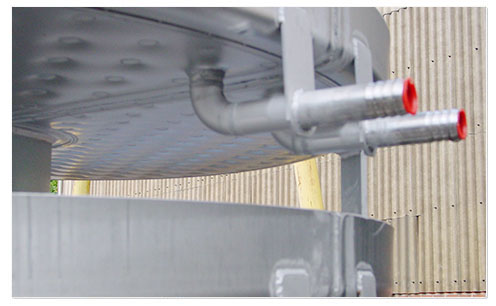AViTEQ heat exchangers are used in many processes where bulk materials must be cooled, heated or dried. This type of special equipment enables heat exchange during material handling. Typically, this type of equipment uses a bottom jacket containing a medium (oil, water, air, etc.) to achieve indirect heat exchange with the material. AViTEQ heat exchangers are used in almost all industrial sectors (chemical, food, plastics, recycling and raw material processes).
One of the most economical process solutions is the use of vertical feeders, whose upward-coiled propellers provide a very large heat exchange area in a limited footprint. The structure of laser welding ensures the integration of the equipment and welding deformation, increases the density of the spiral arrangement, and achieves the maximum heat exchange effect with the minimum amount of heat medium input.
Features & Benefits
- The conveying process is gentle on the material, which is an energy-saving and space-saving vertical conveying solution;
- Continuous operation requires little maintenance;
- It can be designed according to the requirements of hygiene and cleanliness;
Construct features
The main components of the spiral vertical feeder include:
- Screw tops made of stainless steel or other special steel with double-walled propellers on the outside
- The receiving tray can be equipped with wear-resistant protection according to customer needs;
- According to the requirements, a high heat-resistant version is available, and the maximum allowable temperature of the material is 900°C
- Drive base with drive (can be designed to go up or down according to demand);
- According to the demand, it can be designed as fixed or movable;
- Depending on the requirements, it can be designed as open or closed (the enclosure can be a resonant or stationary design).
Design Selection
Its dimensions mainly depend on:
- The material to be conveyed (particle size, bulk density, surface moisture content, etc.);
- conveying capacity requirements;
- the vertical height difference required for conveying;
- Required process requirements (e.g. cooling, drying, etc.);
- Operating conditions
- On-site space arrangement
Key figures
- Effective conveying height difference: up to 8 meters;
- Outer diameter of the propeller: up to 1.5 meters
- Conveying capacity: up to 30 cubic meters / hour, related to the characteristics of the material;
- Drives: 2 inertial vibrating motors
